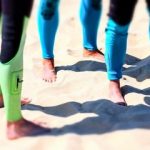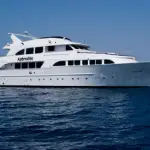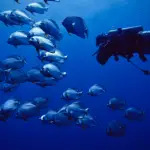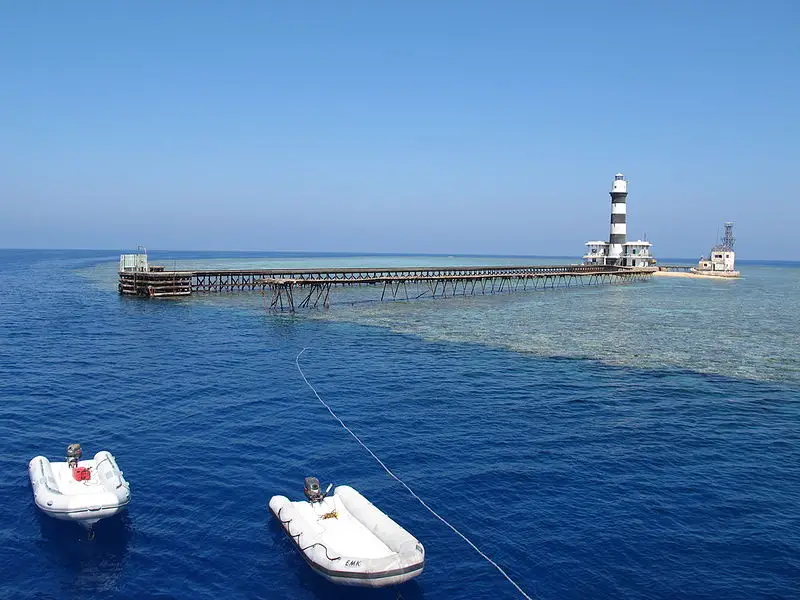
Does the sound of diving in warm crystal clear blue waters of Daedalus Reef, with colourful reefs and the chance to see many types of shark on a dive appeal to you?
If your answer is yes, then you should consider scuba diving on the Red Sea Daedalus Reef dive site. If you’re not sure, please watch the first amazing video of Daedalus Reef dive site below.
The Red Sea Daedalus Reef dive site offers all year round diving with the chance to see schooling hammerheads and inquisitive oceanic whitetip sharks. The Daedalus Reef dive site is only reachable by Red Sea dive liveaboard, as it’s too far offshore for any day boats to reach.
The best way to dive the Red Sea, and especially the best and more remote locations in the Red Sea, is by a scuba diving liveaboard. You can check the latest and best deals on Red Sea liveaboards using the following window:
Please continue reading to discover which month you stand more of a chance to see hammerhead sharks on Daedalus Reef. I’ve spent time analysing customer feedback on what months sharks are seen on Daedalus Reef, which has been included in a table below. There is also a great video towards the end of this article showing Red Sea sharks on Daedalus Reef.
Red Sea trip 2019 Hammerheads and Oceanic whitetip reef sharks
If you would like to know which liveaboards visit the Daedalus Reef dive site, you can find this out from this very handy Red Sea liveaboard dive boat table. Find the perfect dive liveaboard to suit you and your budget.
Another option is for you to take a look to see “what divers are saying about the Daedalus Reef diving” at the same time as reviewing the “most popular Daedalus Reef liveaboards“.
There is a mixed bag of reviews, but here’s an example of a few of the better Daedalus Reef reviews:
- “This was the place I liked most. Hammerhead sharks, reef grey sharks and other sharks, turtles, amazing night dives…“.
- “My favorite dive sight. We saw an oceanic white tip a thresher shark and a whale shark on 1 dive.“.
- “Wonderfull, lots of hammerheads”.
- “Hammerheads were the highlight! Amazing to see them up close and personal“.
- “Amazing diving here too, with a Longimanus and especially a cuddly Napoleon which followd us, as highlight!“.
- “big school of hammerheads (over 25). Oceanic White Tips“.
There’s a whole page of these reviews, which you can read here: Daedalus Reef Reviews.
I have also gone through 148 scuba diver reviews of Daedalus Reef diving and compared which months are better for sharks, manta rays and the best of the reviews that scored the diving more than 9 out of 10. It turns out that the best months for scuba diving with sharks at Daedalus Reef are May and July, followed closely by August and October.
May and July are the best months on Daedalus Reef for schooling hammerheads, whereas September, October and November is when most oceanic whitetip sharks were spotted.
The months that received the best customer reviews are May and July, which ties in with the best months for sharks and especially hammerhead sharks.
My findings are displayed in the table below:
Daedalus Reef diving reviews and shark sightings table
| Month of Daedalus Reef Dive | Scuba Diver Ratings Over 9 out of 10 | Best Month For Shark Sightings | Best Month For Whale Shark Sightings | Best Month For Hammerhead Sightings | Best Month For Oceanic Whitetip (Longimanus) Shark Sightings | Best Month For Thresher Shark Sightings | Best Month For Manta Ray Sightings |
|---|---|---|---|---|---|---|---|
| 01. January | 0 | 0 | 0 | 0 | 0 | 0 | 0 |
| 02. February | 4 | 1 | 0 | 0 | 0 | 0 | 0 |
| 03. March | 4 | 4 | 0 | 1 | 0 | 0 | 0 |
| 04. April | 2 | 2 | 0 | 1 | 0 | 0 | 0 |
| 05. May | 14 | 13 | 1 | 10 | 1 | 0 | 0 |
| 06. June | 7 | 5 | 0 | 5 | 0 | 0 | 0 |
| 07. July | 13 | 15 | 0 | 13 | 1 | 1 | 3 |
| 08. August | 9 | 10 | 1 | 9 | 1 | 0 | 3 |
| 09. September | 4 | 5 | 0 | 4 | 3 | 0 | 0 |
| 10. October | 10 | 10 | 0 | 8 | 2 | 0 | 0 |
| 11. November | 6 | 9 | 1 | 5 | 2 | 1 | 1 |
| 12. December | 6 | 5 | 0 | 4 | 0 | 1 | 0 |
2. It should be noted that not all people who rated the diving mentioned sharks in their review, even though they may have seen sharks when they dived.
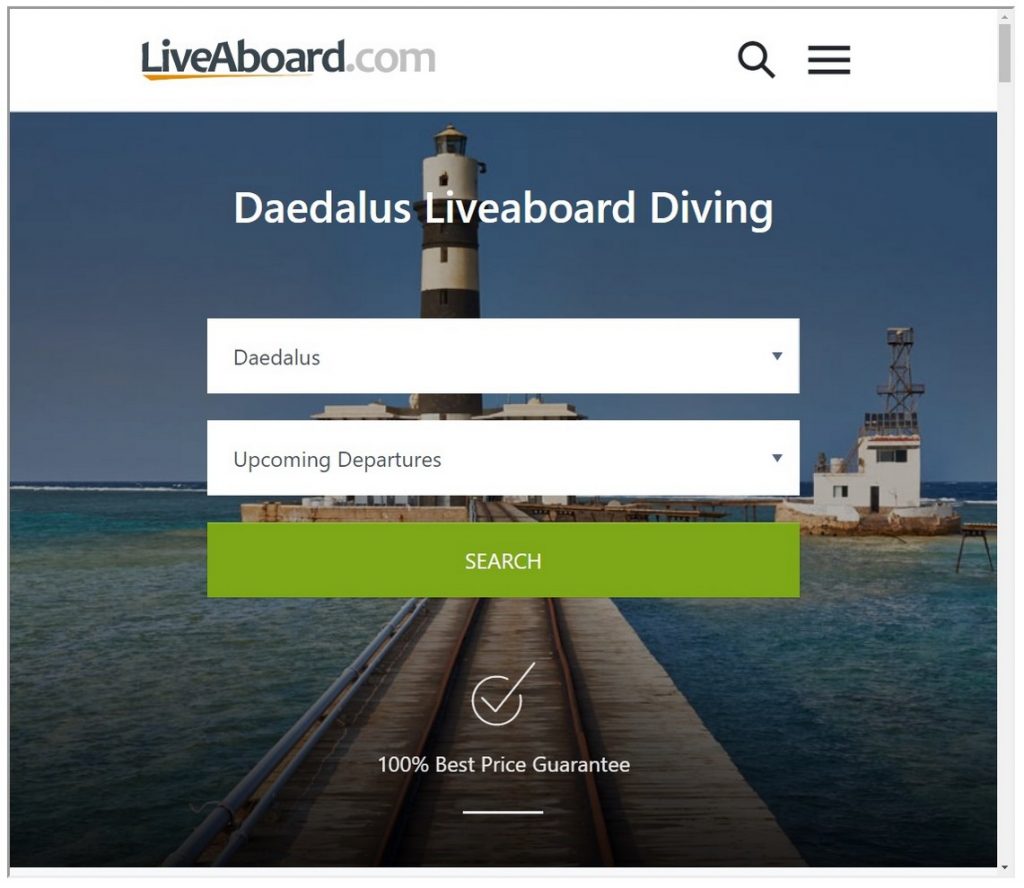
Daedalus Reef scuba diving (also known as Abu Kizan)
The Daedalus Reef dive site, which is known locally as Abu Kizan, is one of the best dive sites in the Red Sea for scuba diving with sharks.
The Daedalus Reef dive site is known for its sharks, and if you’re lucky you’ll get to meet an Oceanic Whitetip Shark and thresher sharks on rare occasions.
The Daedalus Reef dive site is one of only a handful of places on Earth where you get the chance to scuba dive with Oceanic Whitetip sharks (Carcharhinus Longimanus).
The other places are also in the Red Sea and are Elphinstone Reef and the Brothers Islands. It is these three reefs that make up what’s known as the Red Sea Golden Triangle.
Scuba Diving Egypt 2017 – Brothers Daedalus Elphinstone
The video below includes all three dive sites of the Golden Triangle dived from the MY Thunderbird liveaboard.
Liveaboard on the MY Thunderbird
The other sharks seen at the Daedalus Reef include, hammerheads, grey reef sharks, silvertip reef sharks and you may be lucky to see a whale shark there too.
Be aware that if you are lucky enough to experience Oceanic Whitetip sharks when scuba diving Daedalus Reef, they can be extremely inquisitive around scuba divers, especially as you near the surface and you’re mid-water.
Caution is recommended when Oceanic Whitetips are around and these sharks are close-by, always remain vertical in the water, as you are more of a target when you’re horizontal. Keep your eyes on the sharks at all times.
You are also better to remain in a close group too, as sharks are opportunists and will seek out individual targets.
I don’t want to worry you, but the following video is worth watching before you go scuba diving the Daedalus Reef, Red Sea: The Brothers Island shark attack by Oceanic Whitetip.
Discover in this article how the shark attack could have been avoided if the diver had followed the four rules of safe diving with sharks.
I’ll let the video below do the talking about how close oceanic whitetips can get to scuba divers….
Who can scuba dive the Daedalus Reef?
To scuba dive the Daedalus Reef you need to be an Advanced Open Water Diver with PADI or an equivalent dive certification, and have at least 50 logged dives.
You need this level of scuba diving experience due to the dive depths and on occasion the very strong and unpredictable currents. So you need drift diving experience to scuba dive the Daedalus Reef dive site.
If you are wondering why you need this level of experience, I recommend you read this article, which is about how to deal with a down current and not panic.
But if you want to know what happened to me on Elphinstone Reef in a strong down current, please jump straight to this section of the article: What would you do in this down current situation?
What type of diving is the Daedalus Reef?
The diving on the Daedalus Reef dive site is not for the faint hearted, as the currents can be strong and the best dives are around 30-40 metres (100-131 feet) deep. One of which is at the northern tip of Daedalus Reef where you’ll find sharks.
The current usually runs north to south and is often strong, and can be two knots (2.3 mph)* or stronger.
The diving from a Red Sea liveaboard often begins from a Zodiac, as the liveaboard boat will be anchored at an anchoring point at the southern tip next to the lighthouse. The dive will begin with a backwards roll entry.
* You may not think that 2 knots or 2.3mph is fast if you’ve not experienced drift dives in this current, but when water is moving at this speed you would soon tire if you attempted to swim against it.
Diving conditions and diver requirements for the Daedalus Reef dive site
- Strong winds give rise to big waves which makes entering and leaving the water challenging.
- Expect strong currents that flow along the reef walls.
- The currents can change drastically and in intensity during a dive.
- Divers have to be cautious not to be swept out into the open sea by the currents.
- The challenging diving conditions and depth of the dives make them not suitable for beginner divers.
- A minimum of 50 logged dives is a requirement.
- PADI Advanced Open Water Diver or equivalent.
- Drift diving training and experience.
- Good buoyancy control skills, as you’ll be wall diving over an abyss.
- Diver certification that allows you to dive to 30+ metres (100+ feet).
- Experience of diving from a Zodiac boat will help, even if you are on a liveaboard dive boat, as the Zodiac will drop divers into the water.
- Due to strong currents and the risk of being carried out into the open sea night diving is prohibited.
- Always recommended to stay close to the wall or reef and to watch your depth.
- Being able to remain calm when scuba diving with sharks nearby, especially with the highly inquisitive Oceanic Whitetips.**
** Oceanic whitetip shark getting very close to divers Daedalus Reef (Abu Kizan):
You see just how inquisitive this oceanic whitetip shark is with these divers.
Whilst diving on the West wall of Daedalus Reef (Red Sea) we encountered another Oceanic Whitetip shark. This one showed just a little bit too much curiosity….
What will you see diving the Daedalus Reef?
- Hammerhead sharks.
- Oceanic Whitetip sharks.
- Manta rays (see video below).
- Turtles.
- Shoals of barracuda.
- Snapper.
- Tuna.
- Numerous reef fish.
- Moray eels.
- Colourful reefs.
- Thresher sharks.
- Grey reef sharks.
- Silvertip sharks
- Blacktip reef sharks.
- Whale sharks (if you are lucky – see video below).
Footage from three days (17th – 19th July) diving at Daedalus Reef, the Red Sea, with Emperor Divers on board Emperor Asmaa
How to get to the Daedalus Reef
Diving Daedalus Reef is only possible by Red Sea liveaboard dive safari and is reachable from Port Ghalib and Marsa Ghalib, or there are a few dive liveaboards based in Marsa Alam too.
Table of liveaboard diving in the Red Sea
This list of Red Sea liveaboards is in descending customer rating order, followed by Scuba Diving Luxury Rating (SDE Lux Rating, see below), so the liveaboards with the highest customer rating and the best SDE lux rating will be at the top of the list. If you want to change the list order, use the “Sort by” dropdown below.
| Discover Liveaboard | Customer Rating | SDE Lux Rating % | Flexible Booking | Dive Courses | Dietary Requirements | Nitrox | Gear Rental | |
|---|---|---|---|---|---|---|---|---|
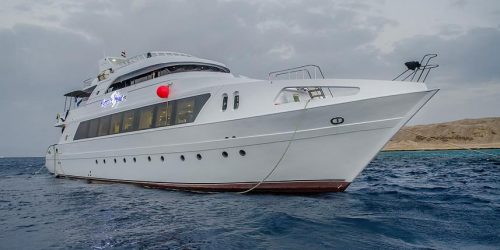 | Review: MY Hammerhead I; Book: MY Hammerhead I | 10 | 71% | YES | YES | YES | YES | YES |
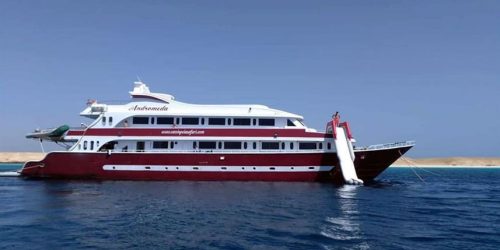 | Review: MV Andromeda; Book: MV Andromeda | 10 | 65% | NO | YES | YES | YES | YES |
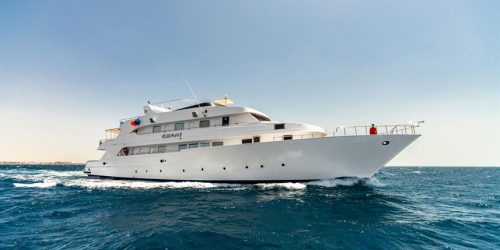 | Review: MV Ghani; Book: MV Ghani | 10 | 50% | YES | YES | YES | YES | YES |
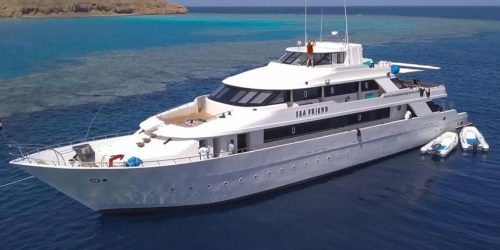 | Review: MY Sea Friend; Book: MY Sea Friend | 9.6 | 71% | YES | YES | YES | YES | YES |
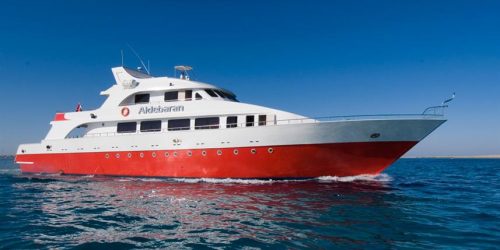 | Review: MY Aldebaran; Book: MY Aldebaran | 9.6 | 67% | YES | YES | YES | YES | YES |
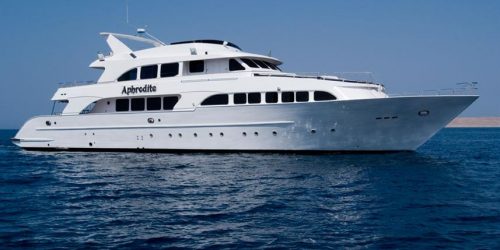 | Review: MY Aphrodite; Book: MY Aphrodite | 9.5 | 88% | YES | YES | YES | YES | YES |
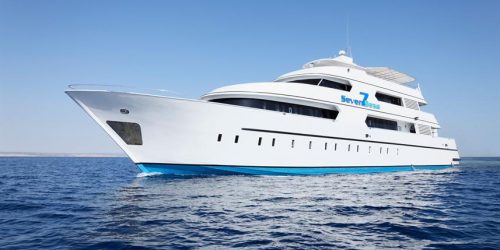 | Review: MY Seven Seas; Book: MY Seven Seas | 9.5 | 87% | YES | YES | YES | YES | YES |
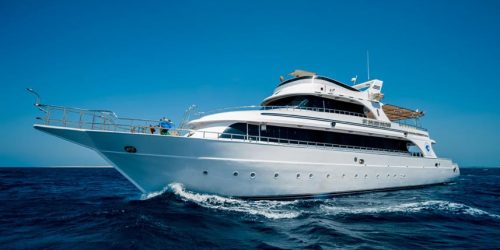 | Review: MY Golden Dolphin; Book: MY Golden Dolphin | 9.5 | 77% | YES | YES | YES | YES | YES |
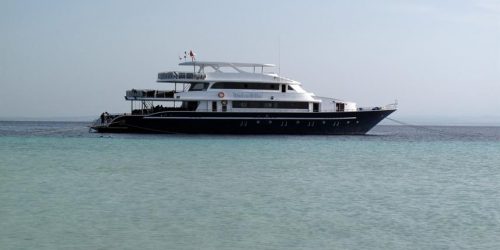 | Review: MV Dolce Vita; Book: MV Dolce Vita | 9.5 | 69% | YES | YES | YES | YES | YES |
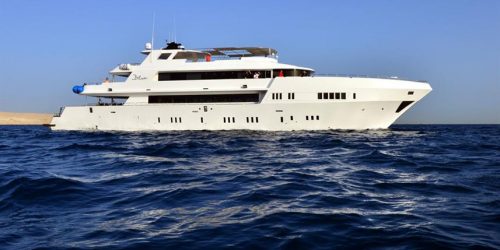 | Review: MY Blue; Book: MY Blue | 9.5 | 63% | YES | YES | YES | YES | YES |
The Scuba Diving Earth Luxury Rating (SDE Lux Rating) is explained on each liveaboard review when you click the “Discover Liveaboard” link, and is my own Liveaboard Luxury Rating I’ve assigned to all liveaboards. Choosing between liveaboards is helped by customer scores, and if you get stuck choosing between two or three liveaboards, where each one has a high customer score out of 10, you can use the SDE Luxury Rating to help narrow down your choice.
Think about it like using Booking.com when searching for the best hotel. Booking.com also use a customer score where each customer rates hotels out of 10. This is similar to the liveaboard customer rating, which is also rated out of 10. But let’s say you only like to stay in hotels rated 8 and above on Booking.com, but you also want the hotel to have WIFI or parking, or to have a swimming pool etc. The features each hotel has is usually secondary to the score out of 10.
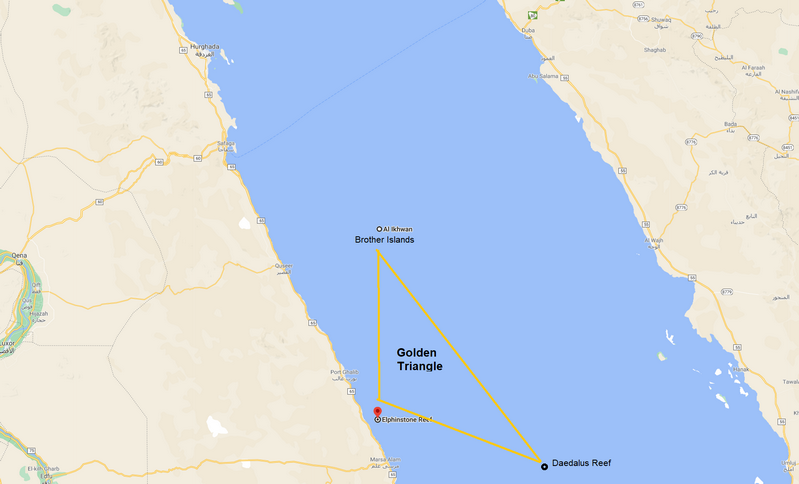
Where is Daedalus Reef in the Red Sea – Daedalus Reef dive site Egypt Map
The Daedalus Reef is located in the middle of the Red Sea, roughly 100 kilometres (63 miles) south east of Marsa Alam,140km (88 miles) south east of Port Ghalib and around 350km (218 miles) south east from Hurghada.
Daedalus Reef is nearly 200km (125 miles) south from the Brothers Islands and about 105km (67 miles) south east from Elphinstone Reef.
It is these three reefs and dive sites that make the golden triangle of dive sites in the Red Sea. Elphinstone Reef is about 120km (75 miles) south east of the Brothers Islands.
Daedalus Reef dive site includes the following details:
- Daedalus Reef is 1070 metres (3,510 feet) long.
- Reef runs north to south.
- A wall dive where the seafloor drops to a depth of over 450 metres (1,476 feet).
- The reef is exposes to wind, waves and currents.
- Strong currents bring plankton and nutrients, which creates an abundance of life and corals.
- Liveaboard dive boats moor at the southern tip near the lighthouse.
- Due to strong currents and the risk of being carried out into the open sea night diving is prohibited.
- Likely to spot Napoleon wrasse, trigger fish, snapper, damselfish, dogtooth tuna and surgeonfish.
- One Daedalus Reef dive site on the west wall is covered in anemones which have plenty of clownfish to enjoy.
- Daedalus Reef has reef walls with hard and soft corals that initially drop to a depth of 20 metres (67 feet), then slopes down to 40 metres (131 feet), before plunging to the depths.
- Next to the liveaboard moorings is a large plateau at a depth of 30-40 metres (100-131 feet). This plateau has a sandy bottom with soft corals and the remains of a pier that used to lead to the lighthouse. There is unfortunately a lot of rubbish here too.
- Oceanic whitetips often circle just beneath the surface near the liveaboard moorings.
- Zealot wreck is on the east wall at 80-100 meters (262-328 feet), which is a largely untouched wreck best for the tech divers.***
For help in choosing the best Red Sea liveaboard for you, please go to this article which includes a very handy table of all Red Sea Liveaboards.
The table includes all the information you need to help you choose the right Red Sea dive liveaboard for you, including which ones dive Daedalus Reef: The Best Red Sea Liveaboard Dive Boats.
*** To help you choose the best tech diving liveaboard, please take a look at this article which lists all 34 of the best technical Red Sea liveaboards.
When is the best time to dive the Daedalus Reef?
You can dive the Daedalus Reef dive site all year round, but the following is worth noting:
- In the winter months from November to December sea conditions can be challenging.
- Water temperature in the winter months is 21°C (70°F).
- Water temperature in the summer months is 28°C (82° F).
- The best time to dive Daedalus Reef for calm seas is June to August.
- Sharks are present all year-round.
- Shark sightings increase from May, which is when there is more chance to see hammerhead sharks.
- In the winter months you are more likely to see thresher sharks as these prefer colder waters.
- Whale shark and manta ray season on Daedalus Reef is between July and August, which is also the best time to spot schooling hammerheads too.
You may like to watch this video of Red Sea sharks on Daedalus reef, which includes a silver tip reef shark, a thresher shark, schooling hammerheads and oceanic whitetip sharks.
Daedalus Reef is one of the best places for Diving all around the world. In Balkysub we are lucky to enjoy this place every year with our divers and students. Enjoy this amazing video!!!
Can you get to the Daedalus Reef dive site by day boat?
You cannot get to the Daedalus Reef dive site by day boat, as it’s 100km (63 miles) south east of Marsa Alam, which is too far to reach on a day trip.
The Daedalus Reef snorkeling
It isn’t advisable to snorkel the Daedalus Reef, due to the strong currents that could sweep you out to the open ocean. Plus the sea conditions can be rough when it’s windy, which would make it unsafe to go snorkeling.
Seeing that you may like the idea of scuba diving with sharks, you may like to read this article about great white sharks in the Caribbean and the Gulf of Mexico. You may be surprised by what you read, I certainly was!
This article is also interesting about a great white shark pinged near to the Maldives.
But then if you want to be really surprised, take a read of this article about a great white shark spotted by a snorkeler off the southern Great Barrier Reef. The article includes a video of the white shark concerned.
I hope you enjoyed this page about Daedalus Reef scuba diving
If you have more questions either about snorkelling or scuba diving (or specifically about Daedalus Reef scuba diving), please comment below with your questions.
Please share your experiences, plus dive sites, resorts and liveaboards you recommend. Share the time of year of your trip together with what you saw, the visibility, currents and dive operator, as this will help others who read this page.
There will also be many more pages and articles about scuba and scuba diving safety tips (and on snorkelling too) for you to read and learn about this fabulous sport.
Have fun and be safe!

